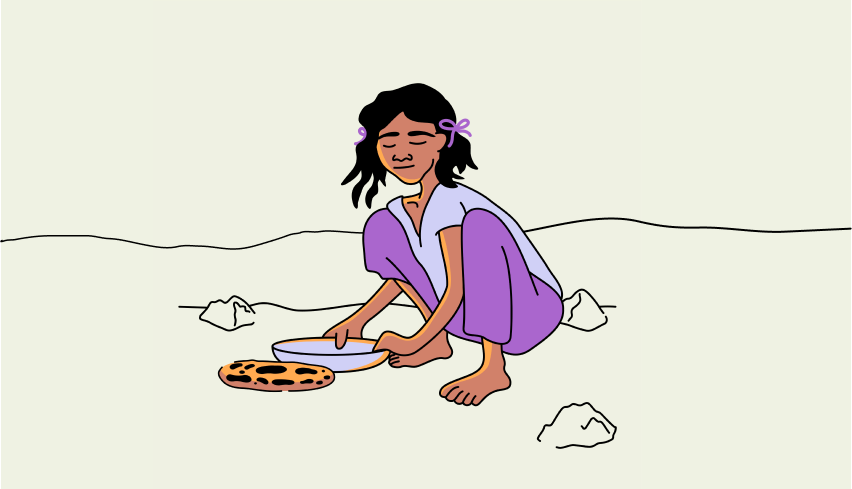How to Secure an At-Risk Child
On a good day, Vala eats. She’s given a small piece of flatbread and a bit of lentil soup.
Other days, there’s no food for her at all.
Vala’s parents work hard, but still, they can’t always afford food. They used to grow crops. But because of ongoing droughts, they don’t have enough water for their small field.
Vala is dangerously underweight, and her body shows signs of malnutrition: Sores cover her legs and her hair is brittle.
Survival becomes more precarious with each passing day.
On average, women and girls in developing countries walk about 3.5 miles a day for water.
It’s 3 miles from her village to the river. Most of the time, her daily trek to the river takes her just over an hour. But struggling under the weight of a full pot of water balanced on her head, Vala takes nearly twice as long to get home.
In the heat of the sun, she’s worn down by the task. She takes frequent breaks under shade trees, making her trek even longer.
There used to be a well closer to Vala’s home.
But droughts have dried it up. The families in her village can’t afford to pay to drill a deeper well.
After her daily trek for water, Vala’s nutrient-deprived body is exhausted.
She has no time or energy to go to school or make friends. With her days dominated by hunger and collecting water, Vala’s childhood is slipping away.
258 million children aren’t able to attend school. Children who don’t have a solid foundation in reading and writing have less of a chance of future success.
Without the critical resources necessary for a child to grow and develop into a thriving adult, communities end up trapped in poverty.
Still, Vala has no alternative. She continues to take the same route every day at the same time.
Vala’s whole life is shaped and impacted by her lack of basic necessities: food and water.
- She suffers from chronic waterborne illness and malnutrition
- She’s more vulnerable to the impacts of natural disasters
- She’s exposed to the terrifying threat of trafficking
- She misses out on opportunities for education
Partnering With Local Care Networks
SOS partners with Local Care Networks in communities like Vala’s to address the most critical needs of at-risk children.
Our teams are equipped with tools and strategies to walk into any community in the world and quickly identify the forces putting children at risk and the order of urgency in which to address these forces.
Through partnership with Local Care Networks, SOS helps to prioritize the most critical needs to establish a foundation of care and well-being for children like Vala.
SOS partners with Local Care Networks to:
- Meet basic needs
- Secure children from dangerous external threats
- Address illiteracy and provide accessible education
- Rally healthy communities and relationships around isolated children
- Develop communities to ensure that children can grow and thrive
A Simple Solution to Child Isolation
For Vala’s community, this means equipping a Local Care Network to meet basic needs like food and water. They drill a new well close to the village so women and girls no longer spend hours every day collecting water.
Now that she has close access to clean water, Vala’s young body starts to recover from waterborne disease. Her family can begin growing vegetables again, which provides Vala with much-needed nutrients that boost her immune system and help her grow strong.
With her health restored and free hours to spare, Vala now has time to go to school. She is able to learn and start planning for her future. She begins making friends, and she meets teachers who mentor, educate, and encourage her to pursue her dreams.
The simple act of making clean water accessible has a cumulative effect on Vala’s life. It has drastically improved her chances of becoming a thriving, productive member of her community… all because a Local Care Network was equipped to help remove barriers that kept Vala isolated and at-risk.
If you ask Vala what she hopes for, she’ll tell you that her dream is to become a teacher when she grows up. And now she has the time, health, access to education, and safe community relationships that will help her work toward her goal.
You Can Help Secure At-Risk Children
Because of your giving, at-risk children are secured and communities are healthier.
Give today to help break the cycle of isolation.


